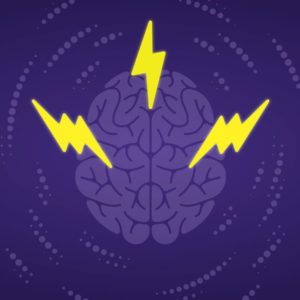Storytelling
Emotions, Arousal, and the Science Behind Why Stories Get Shared
Data visualization doesn’t work without emotion.
Sure, data journalism involves data collection, statistical analysis, visualization, and explanation, but it takes an emotional narrative to contextualize your findings. Without emotional context, even the most interesting statistics will struggle to find an audience.
This is why it’s crucial that marketers understand how to create emotional data-driven content if they want audiences to care. Emotions act as our compass as we try to navigate the world. They compel us to take action, to keep reading, to spread the word.
Research by Jonah Berger and Katherine Milkman shows that viral content is driven by emotional transmission and arousal. They studied 7,000 articles published by The New York Times to see which factors contributed to social sharing. “Consumers often share content for self-presentation purposes or to communicate identity,” they write, “and consequently more positive content may be shared more because it reflects positively on the sender.”
But as they discovered, virality is more complicated than that. Emotional transmission is the process that inspires readers to share content. When endless social media posts beg for our attention, clicking the share button allows us to say, “Hey followers, I felt an emotion, and though I know you aren’t physically here right now, I’d like to share that emotional experience with you.” We share because we want to bond with those in our network.
What’s arousal got to do with it?
Slightly uncomfortable term, sure, but arousal, in this case, is different than what you may be thinking. In the late 1880s, William James developed a pervasive theory that said all emotions were combinations of physiological response to stimuli: facial expressions, core temperature swings, increased or decreased sweating, or variation in heart rate.
In 1962, Stanley Schachter and Jerome E. Singer announced that they didn’t exactly buy this theory. They believed our emotional lives involved more than physical symptoms, so they developed a two-factor theory of emotion that combined arousal with a new variable: cognitive context.
I’ve simplified the two-factor theory here:
Arousal (general bodily changes) + cognition (thought) = emotion

To test their theory, Schacter and Singer administered an injection to study participants. These people were either injected with a chemical to induce physiological arousal or a placebo shot which would have no chemical effect. Also, the participants were either told the shot would induce an emotion, or they weren’t told anything about the shot at all.
Participants were then split into two scenarios, with placebo subjects landing in both:
- Euphoria: Participants were placed in a room with an actor or research assistant who invited them to play with hula-hoops and other toys and games to elicit joy.
- Anger: Participants were placed in a room with a rude actor or research assistant who administered a demeaning questionnaire with questions like: “With how many men (other than your father) has your mother had extramarital relationships?” The lowest possible answer choice available was “4 and under.”
Participants then filled out a questionnaire about their experiences. Generally, Schacter and Singer’s findings supported their hypothesis. They found that people experiencing physiological responses unbeknownst to them will feel an emotion more potently than people who either haven’t been chemically stimulated or did get the shot but weren’t told what was in it.
So the study suggests that a physiological response can only be enhanced with the right cognitive context. Together, those things make an emotional response propelling people to share.
Why this matters to creators
Fractl has conducted extensive research on the emotions that most often inspire social media shares. We’ve learned that positive emotions are slightly more likely than negative ones to make a piece of content take off. Berger and Milkman went a bit further in their study, determining how different emotions impact viral content. For example, sadness and anger are both negative emotions, but anger fuels more sharing because it is “high arousal” while sadness is “low-arousal.”
Whether you’re covering positive or negative material, all marketers want their content shared where the target audience can see it. For that objective, data visualization is the ideal medium for generating shares. Infographics and data-driven animation combine an arousing element—a memorable visual metaphor or design—with the necessary cognitive context. The context can be the data itself, explanatory copy, or both.
The synthesis of the context and art, then, makes the format compulsively shareable.
Take, for example, this infographic on the workplace for insurance Quotes. Through vivid colors and graphical representations that highlight large differences in the data, this content creates a state of physiological arousal. Whether you’re a cautious manager or a beleaguered employee, you feel something while taking it in.
That raw arousal can be nudged into a distinct emotion if the content is well crafted. Readers can then use the anchoring data points and labels to decide which emotion they feel.
In this example, viewers may feel fear, joy, anger, interest, or surprise. Their reaction hinges on their experiences at work, which is their cognitive context.
Note that InsuranceQuotes doesn’t force viewers to feel any particular emotion. Rather, the company presents data in a way that invites viewers to feel strongly about what they’re seeing. The key is giving your audience the freedom to take the next cognitive step on their own.
Because the audience ultimately decides what emotion to feel, the content is perfect for sharing. InsuranceQuotes lays the scaffolding, but the audience provides the context and, hopefully, the resulting emotions inspire them to share with their network.
Jacob Jones is a little nerdy when it comes to emotional psychology. As the creative process engineer at Fractl, he spends his days viewing every campaign Fractl produces through a rigorous methodological lens, with particular detail to data validity, fair visual representations, and highlighting the findings that readers will find most emotional.
Get better at your job right now.
Read our monthly newsletter to master content marketing. It’s made for marketers, creators, and everyone in between.




